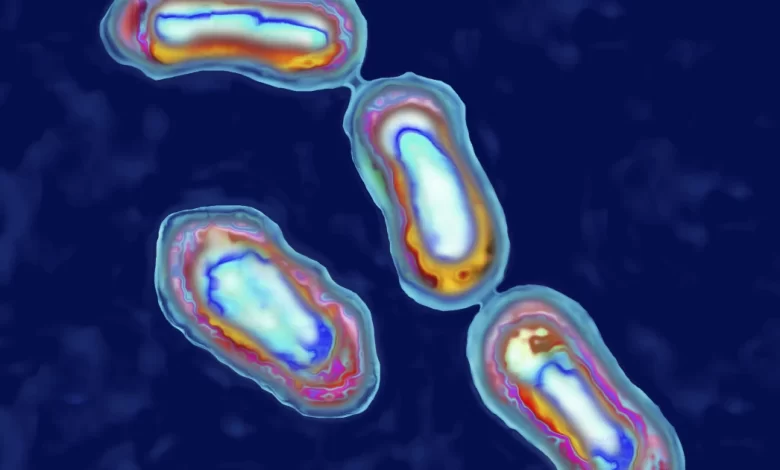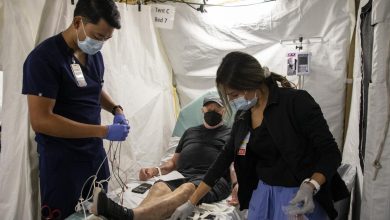Shocking Health Alert: Bubonic Plague Confirmed in California Resident

Introduction: A Resurfacing of an Ancient Scourge
Shocking Health Alert: In a startling event that reads more like historical fiction than modern news, a resident in South Lake Tahoe, California has tested positive for bubonic plague. The disease, infamously known for decimating Europe in the 14th century, has once again made its presence felt in the United States. This rare occurrence is a stark reminder that even diseases seemingly relegated to history can emerge unexpectedly in the present day.
1. What Happened — The Confirmation of the Plague
On August 19, 2025, El Dorado County officials confirmed that a South Lake Tahoe resident tested positive for plague, suspected to have been caused by a flea bite while camping in the region. The individual is recovering at home under medical supervision.
This marks the first human case of plague in El Dorado County since 2020. The disease is caused by Yersinia pestis, a bacterium carried by fleas that infest wild rodents, particularly in higher-elevation areas such as those around Lake Tahoe.
2. Historical Context: Plague in California’s Past
Though rare today, plague outbreaks have a notorious past in California:
- 1900–1904 San Francisco Bubonic Plague
The first known continental U.S. outbreak occurred in Chinatown, resulting in about 121 cases and 119 deaths. The plague was initially denied by Governor Henry Gage, which delayed containment — a hard-learned lesson that led to improved public health measures. - 1924 Los Angeles Pneumonic Outbreak
A later, more lethal pneumonic form surfaced, prompting significant rodent control efforts and public hygiene campaigns. Despite the severity, officials initially conspired to suppress the outbreak’s details, revealing the dangers of political interference in public health.
These historical episodes underscore that California, though modern in many ways, remains a land where ancient pathogens still circulate, particularly in wild animals.
3. How Plague Works: The Bubonic Cycle
Yersinia pestis, the bacterium behind plague, follows a familiar cycle:
- Reservoir: Wild rodents such as squirrels and chipmunks harbor the bacterium, often without showing illness.
- Vector: Fleas feeding on infected rodents can transmit the bacterium to humans through bites. Pets like cats or dogs may also carry infected fleas into homes.
- Incubation & Symptoms: Symptoms usually appear within 2 weeks post-exposure and include fever, nausea, weakness, and swollen lymph nodes (buboes).
- Treatment: Plague remains treatable with antibiotics, and early detection is key to recovery.
- Prevalence: The CDC reports an average of seven human plague cases annually in the U.S., mainly in the rural West. In California, cases have historically been sporadic, but rodents continue to be monitored regularly.
4. Local Surveillance: El Dorado County’s Plague Monitoring
El Dorado County maintains active plague surveillance:
- 2021–2024: 41 rodents (ground squirrels or chipmunks) tested positive for plague exposure in the Tahoe Basin.
- Through 2025: 4 additional rodents have tested positive so far this year.
Though human cases are rare, these findings indicate that Yersinia pestis is still naturally present in local wildlife, especially at higher elevations near Tahoe.
5. Why This Is a Shocking Health Alert
Despite plague’s ancient reputation:
- Modern Medicine: Antibiotics and surveillance make it largely controllable today. Deaths are uncommon when the disease is treated promptly.
- Public Unawareness: Many people assume plague is a relic of the past. One Lake Tahoe visitor noted, “I didn’t even know the plague was still something that was going on”.
- Wildland Reemergence: Outdoor enthusiasts often overlook the risks posed by wild rodents and their fleas when camping or hiking.
- One Bite Can Be Dangerous: A single insect bite can transmit a rare but serious illness — that’s why this qualifies as a true health alert.
6. Expert Insight and Medical Perspective
Infectious disease specialists emphasize vigilance:
- Dr. Peter Chin-Hong (UCSF):
- Explains that plague is spread by flea bites from rodents like squirrels and chipmunks.
- Notes bubonic plague still occurs—about seven cases yearly, mostly in the western U.S.
- Highlights the role of sanitation and rat control in reducing cases since the Middle Ages.
- Dr. Melanie Ott (Gladstone Institute, UCSF):
- Reassures that antibiotics are highly effective when administered early.
- Encourages awareness without panic: “We should … know that rodents … rarely but still do carry … plague. … We should not panic”.
7. Risk and Prevention: What Authorities Recommend
Based on county and state guidance, here are key prevention measures:
- Avoid contact with rodents, including not feeding or handling squirrels or chipmunks.
- Never touch sick, injured, or dead rodents, and keep pets away from them.
- Camp away from animal burrows, or areas with visible rodent activity or dead rodents.
- Wear protective clothing, including long pants bloused into boots.
- Use insect repellent containing DEET, especially at lower pant cuffs and socks.
- Keep pets on leashes; don’t let them roam near rodent burrows, and use flea control products. Cats are particularly susceptible and pose additional risk to humans
- If ill, especially after outdoor activity in plague-prone areas, tell your physician about possible exposure — early antibiotic treatment saves lives.
8. Broader Implications: Public Health & Environmental Awareness
This incident invites reflection on several fronts:
- One Health: Human, animal, and environmental health are interconnected. Plague is a perfect example, emerging via animal-to-human transmission in wilderness areas.
- Climate Change & Wildlife Patterns: Shifting weather patterns could affect rodent and flea populations, potentially increasing risk areas.
- Education: More needs to be done to inform the public—especially outdoor enthusiasts—that plague, while rare, is still a modern health threat.
- Surveillance Importance: This case highlights the value of wildlife monitoring, prompt reporting, and rapid response by public health agencies.
9. Real-World Impact & Community Response
Though it’s too early for broader trends, this case serves as a wake-up call for:
- Campsite operators, hikers, campers, and pet owners to renew their vigilance.
- Medical communities in rural and wilderness-adjacent areas to stay alert for bubonic symptoms.
- Residents to take personal and household precautions, especially in areas with active surveillance data showing plague presence in wildlife.
Local authorities continue to monitor rodent populations and post alerts when needed to safeguard public health.
Conclusion:
A Cautionary Tale from the Past, Alive Today
“Shocking Health Alert” isn’t hyperbole—it encapsulates the unsettling reality that a centuries-old scourge is still around us. A lone, treated case in South Lake Tahoe might not signal a widespread outbreak—but it undeniably underscores one point: vigilance matters.
Even in 2025, bubonic plague remains a rare but real threat, especially for those exploring the great outdoors. With surveillance, awareness, and prompt medical intervention, we can continue to keep this ancient disease in check.
This incident shines a light on the persistent fragility of public health, and why respecting natural ecosystems—and our interactions with them—remains essential.




